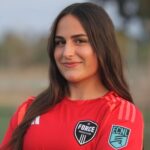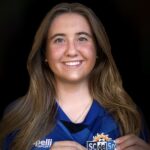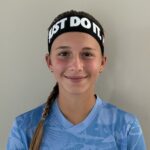Concussions: Not just a bump on the head (Part 2 of 2)
By Dr. Wendy Lebolt
[Editor’s note: This is the second half of the latest column from Dr. Wendy Lebolt, a longtime coach and physiologist who is the founder of Fit2Finish, a Northern Virginia-based training, fitness and rehabilitation company which works with teams and individual players to maximize health and performance. The Soccer Wire is excited to present Wendy’s learned perspectives on the mental, physical and psychological aspects of the beautiful game. Learn more about her background here.]
Part 1 of this piece can be found here.
Paul Rupp, head Athletic Trainer at Oakton High School in Vienna, Va., has an extensive concussion protocol that is well-documented in athletic training literature. First, when he diagnoses a concussion, the student’s circle of teachers, administrators, counselors and parents are all notified. The athlete is counseled to stay home, with no phones, no “brain work,” and stay off computers, televisions and other screens – to completely rest the brain.
Typically, symptoms resolve in seven to 10 days. Then, when the athlete feels well enough to return to school, he is scored on a 22-symptom assessment. At Oakton, they do this daily. When the athlete is symptom-free, he or she is gradually reintroduced to activity, and ultimately, to full participation.
How long does it take? Each case is different. “I have one player who is still receiving accommodations three years out, in college,” Rupp laments.
It can take weeks, months, years.
“The problem is,” says Rupp, “I can’t keep kids home. They need to completely rest in order to let their brains recover, but they often have an [important] test or they’re afraid they’ll fall behind in a class. They’ll stop the texting, but they’ll do their homework…on the computer. And they’ll come to school to take the test.”
And that sets them back. Asking the brain to do work when it is already maxed out upends recovery. “There are so many ‘Type-A’ kids,” Rupp offers. “I can’t keep ‘em home.”
Part of the challenge is that we have been conditioned to think of young people as maximally resilient. They bounce back from injury. But not this one. They are particularly susceptible to brain injury, and it is invisible on typical neuroimaging studies (MRI and CT scans). The damage done is functional rather than structural.
As Rupp puts it, “It’s not a hardware problem; it’s a software problem.”
It’s the worst in youth athletes, even compared to college-age or professional players. And it gets worse, when there is a second impact before symptoms from the first have cleared. This could be a second blow on the field, but it can also happen if the kid hits his head on his locker or raises the trunk of the car quicker than he can pull back his noggin.
When this kid is already carrying a headache and some dizziness, chances of this are increased. Second impact syndrome can be devastating, even deadly, especially for the adolescent. Studies show that, in second impact, nerve cells of the fragile, concussed brain (still recovering from the initial trauma) respond by a massive release of potassium ions into the extracellular space. This causes an immediate and critical swelling of the brain that can have fatal consequences.
What do we do? Here is what sport science is saying about current initiatives related to reducing risk.
Head gear – All health professionals I interviewed said emphatically that no head gear will prevent concussions. While it may distribute the blow and prevent skull fracture, it hasn’t been shown to reduce the incidence of concussions. Vicki Galliher, ATC at Marshall High School in Falls Church, Va., says it offers only a negligible reduction in the force of the blow. You can see her comprehensive presentation on her experience at Marshall here.
Physicality/Style of play/Rule enforcement – Do we look to the referees to tone down the contact occurring in today’s soccer? Most studies done on heading and concussion to this point are inconclusive at best. We are just now adopting research protocols that can measure brain accelerations in competitive situations (see this study in the June 2012 issue of Medicine & Science in Sports & Exercise) and dangerous brain conditions are being documented. Whether rough play is a significant factor remains to be determined. Avoiding heading hasn’t so far been shown to prevent concussions.
Education – Coaches, parents and teammates need to know the signs of concussion and favor a conservative approach with any player suspected of having one. “When in doubt, sit them out,” is the rule.
Here is what coaches can do:
- Educate themselves about concussive symptoms
- Teach proper heading technique including good body position in the air
- Engage in neck and upper back/shoulder strengthening – especially for your female players (see www.Fit2Finish.com for head and neck strengthening ideas for female soccer players).
- Encourage your players to report any symptoms to you. Do not let them return to play until they are cleared, even if player or parent insists.
- Educate your players and parents about this injury.
Here is what parents can do:
- Monitor your kid for symptoms, even if you haven’t heard about any collisions.
- If they complain of any of the above symptoms or they show persistent (beyond teen-normal) irritability, or are especially emotional, nervous, sad, confused, or fatigued, get them checked out.
- Girls may be more likely to complain of drowsiness and sensitivity to noise, boys of amnesia and confusion.
Here’s what athletes can do:
- Don’t downplay how you feel after a collision. Report it to a coach, parent or athletic trainer.
- Notice if a teammate exhibits symptoms of a concussion; they may not realize it.
- If you have a concussion, rest your brain the way you would rest an injured muscle – completely, until it’s ready to return to action. As Rupp says, “Turn off your alarm. If you wake up in time for school on your own, you’re probably good to go. If you sleep until noon, you probably need the rest.”
Athletic trainers may be our first line of defense against this injury, which is now looking like an epidemic among our high school athletes. They know the kids – and they have a pre-test. Ask the school’s ATC just to have a conversation with your kid. And be sure you’re not the parent who said to Paul Rupp, “Oh, my kid is just being dramatic. Let him play.”
Let the health professionals decide.
I was floored by the kids on NBC’s “Rock Center” feature last month:
All of them had a headache. All had had more than one concussion. The ones who were allowed, still insisted on playing because “They just couldn’t imagine giving it up.” And their parents were letting them. Those kids may be giving up more than they can even imagine. They’re kids, after all – their brains are still maturing.
And that’s the whole deal. As coaches and parents, we have to draw a line on this one. Let’s give them the tools they need to meet the game, as it’s played. Tool number one: when you’re injured, take a knee.
I’m reminded of what Washington and Lee University president Dr. Kenneth P. Ruscio recently said to my daughter and her classmates upon their graduation from W&L: “Is your brain a sufficiently interesting place to spend the rest of your life?”
SOCCERWIRE MARKETPLACE
- MICFootball Punta Cana 2026
- Dana Cup Hjørring 2026
- 15th Annual Loudoun Soccer College Showcase
- OFFICIAL FC BARCELONA SOCCER CAMPS
- The St. James 2025 Winter Futsal Academy Player ID Sessions
- New England Copa Surf 2026
- Adidas National Cup 2026
- Adidas Showcase 2025
- Adidas Preseason Clash 2025
- visitRaleigh.com Showcase Series 2025, hosted by NCFC Youth











